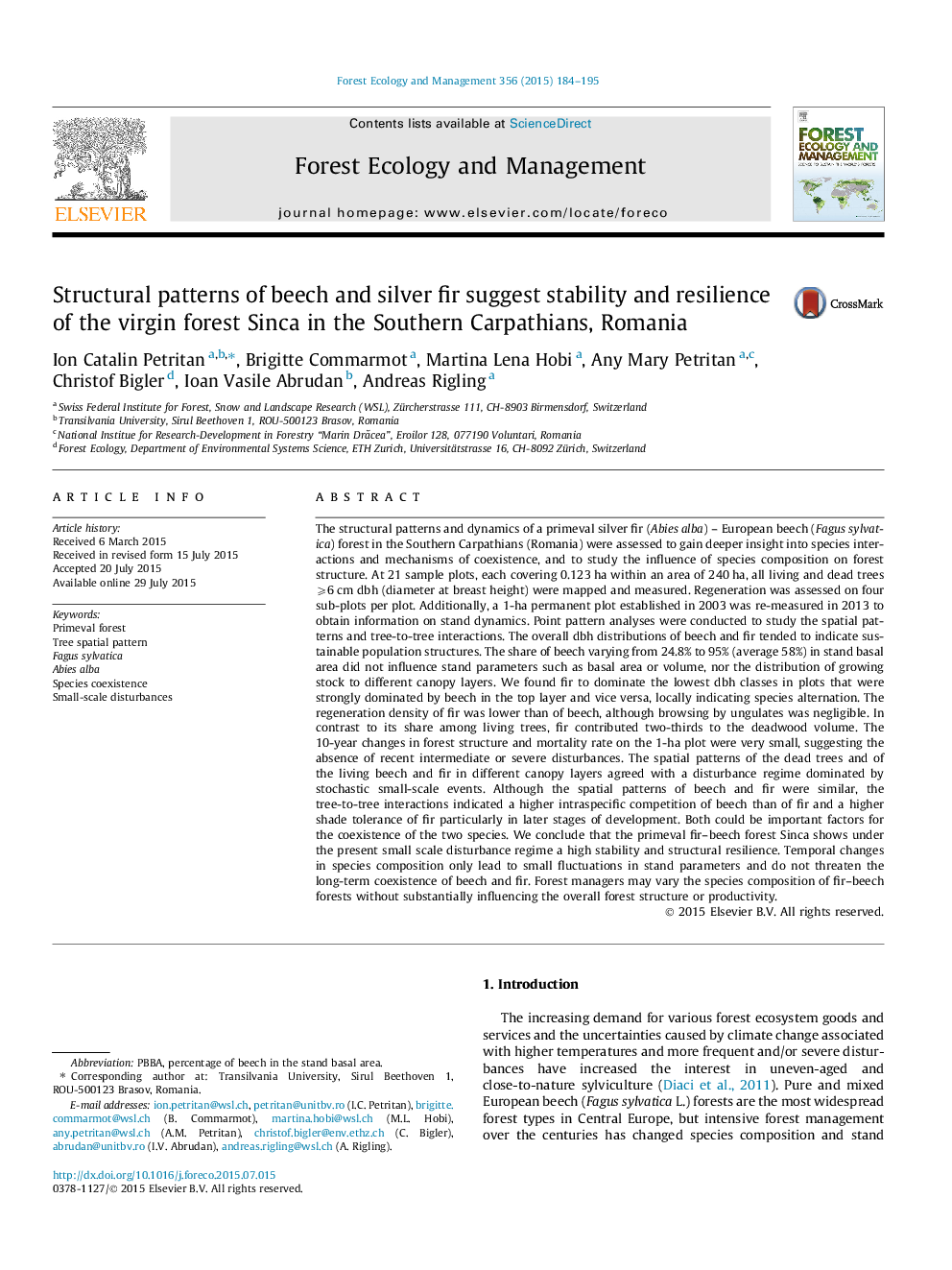| کد مقاله | کد نشریه | سال انتشار | مقاله انگلیسی | نسخه تمام متن |
|---|---|---|---|---|
| 86199 | 159171 | 2015 | 12 صفحه PDF | دانلود رایگان |

• Shift in composition from top-layer to regeneration indicated species alternation.
• The spatial patterns of trees revealed small- rather than large-scale disturbances.
• Point pattern analyses revealed mechanisms of coexistence of beech and fir.
• The share of beech in basal did not influence stand structure nor volume.
The structural patterns and dynamics of a primeval silver fir (Abies alba) – European beech (Fagus sylvatica) forest in the Southern Carpathians (Romania) were assessed to gain deeper insight into species interactions and mechanisms of coexistence, and to study the influence of species composition on forest structure. At 21 sample plots, each covering 0.123 ha within an area of 240 ha, all living and dead trees ⩾6 cm dbh (diameter at breast height) were mapped and measured. Regeneration was assessed on four sub-plots per plot. Additionally, a 1-ha permanent plot established in 2003 was re-measured in 2013 to obtain information on stand dynamics. Point pattern analyses were conducted to study the spatial patterns and tree-to-tree interactions. The overall dbh distributions of beech and fir tended to indicate sustainable population structures. The share of beech varying from 24.8% to 95% (average 58%) in stand basal area did not influence stand parameters such as basal area or volume, nor the distribution of growing stock to different canopy layers. We found fir to dominate the lowest dbh classes in plots that were strongly dominated by beech in the top layer and vice versa, locally indicating species alternation. The regeneration density of fir was lower than of beech, although browsing by ungulates was negligible. In contrast to its share among living trees, fir contributed two-thirds to the deadwood volume. The 10-year changes in forest structure and mortality rate on the 1-ha plot were very small, suggesting the absence of recent intermediate or severe disturbances. The spatial patterns of the dead trees and of the living beech and fir in different canopy layers agreed with a disturbance regime dominated by stochastic small-scale events. Although the spatial patterns of beech and fir were similar, the tree-to-tree interactions indicated a higher intraspecific competition of beech than of fir and a higher shade tolerance of fir particularly in later stages of development. Both could be important factors for the coexistence of the two species. We conclude that the primeval fir–beech forest Sinca shows under the present small scale disturbance regime a high stability and structural resilience. Temporal changes in species composition only lead to small fluctuations in stand parameters and do not threaten the long-term coexistence of beech and fir. Forest managers may vary the species composition of fir–beech forests without substantially influencing the overall forest structure or productivity.
Journal: Forest Ecology and Management - Volume 356, 15 November 2015, Pages 184–195